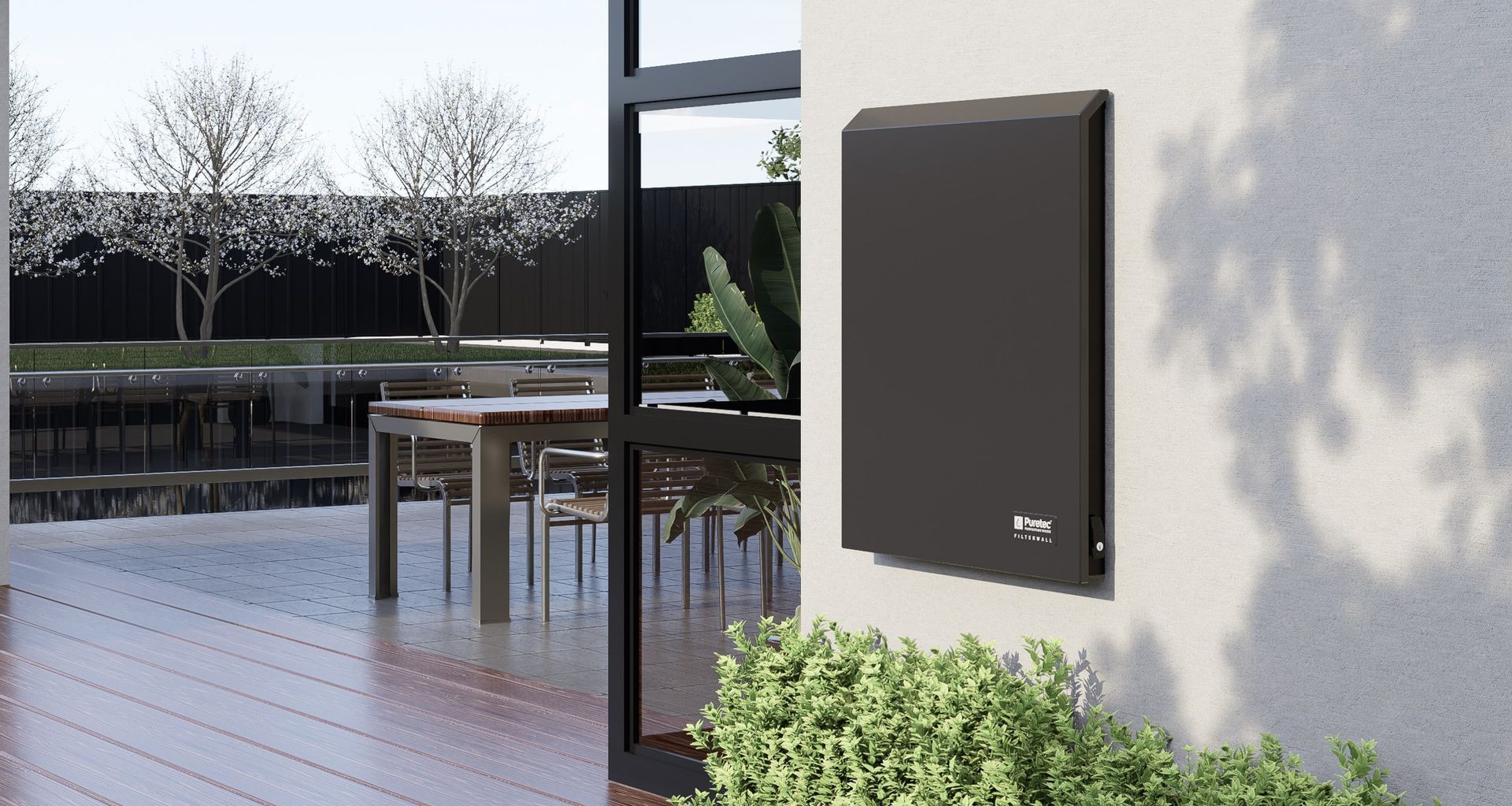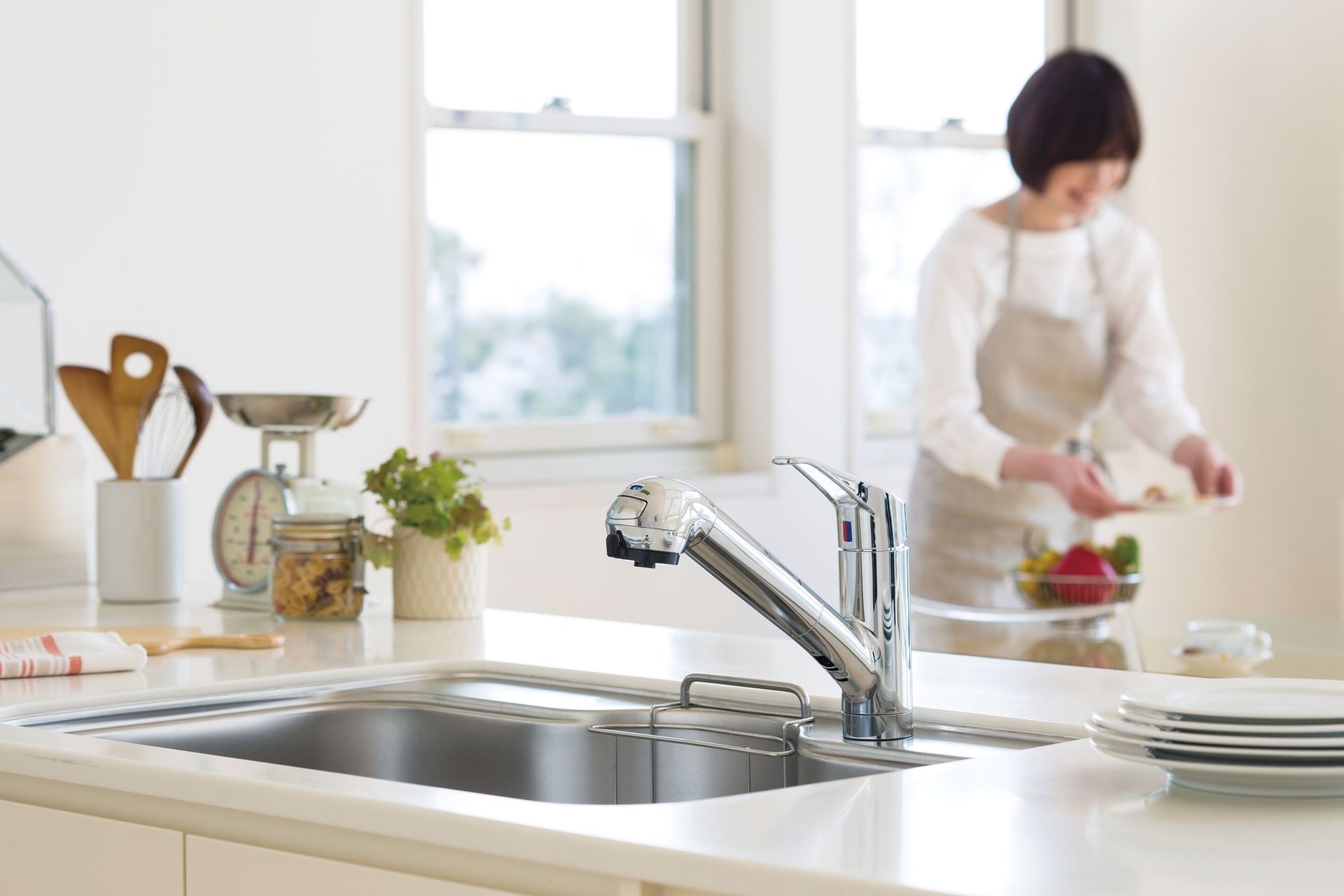Different types of water filter systems and how to choose the best one for your home

Selecting a water filtration system can feel daunting due to its technical aspects. However, the key is understanding the specific contaminants in your tap water. Once you identify these contaminants, choosing the right system becomes much simpler, allowing you to focus on your home's specific needs.
What is a water filtration system?
Water filtration systems ensure readily accessible and safe drinking water by filtering out harmful contaminants. These systems vary in complexity and range from simple household devices to intricate industrial systems. In everyday households, these systems might include basic pitchers with activated carbon filters or more advanced under-sink filters. In industrial settings, comprehensive filtration systems can involve multiple treatment stages, including mechanical filtration, chemical treatment, and UV sterilisation, to ensure that the water meets safety standards. Regardless of the situation, all filtration systems aim to provide clean and safe drinking water.
How to test your water quality and identify issues
Testing your water quality and identifying potential issues is a crucial step in ensuring the safety and health of your household's water supply. First, start with getting a water testing kit from a reliable supplier, which can test for a range of contaminants such as bacteria, heavy metals, chlorine, pesticides, and pH levels. Follow the instructions carefully to collect water samples from various points in your home, such as the kitchen tap, bathroom, and outdoor hose. Once you have your samples, use the test strips or vials provided in the kit to check for specific contaminants and compare the results to the guidelines provided by the kit. Alternatively, it’s not uncommon for water filtration companies to offer water testing services if you’d rather have a professional take a look at your water quality.
Regular testing helps you identify potential issues early, such as elevated levels of lead or bacteria. This allows you to take appropriate actions, like installing or upgrading a water filtration system or contacting your local water provider for further assistance. By routinely monitoring your water quality, you can ensure that your drinking water remains safe and clean for all household uses.
Common water contaminants in Australia
Water contaminants are substances that pollute water, making it unsafe or unpleasant for drinking and other uses. These contaminants can originate from natural sources, human activities, or industrial processes. Natural sources include minerals and microorganisms, while human activities such as agriculture, waste disposal, and urban runoff introduce pollutants like pesticides, fertilisers, and sewage. Industrial processes contribute to heavy metals, chemicals, and other hazardous materials. Managing and mitigating these contaminants is essential to ensure the safety and quality of water for various uses.

Types of water filter systems
1. Reverse osmosis (RO) systems
A Reverse Osmosis (RO) system forces water through a semipermeable membrane, effectively removing dissolved salts, heavy metals, nitrates, and other contaminants. This process produces highly purified water by separating impurities from the water molecules.
- Pros: Effectively removes a wide range of contaminants, including dissolved solids.
- Cons: Wastes a significant amount of water and can be slow.
- Pro tip: Install a permeate pump to improve efficiency and reduce wastewater.
- Estimated cost: $500 - $2,000 for household systems.
- Ideal house: Best for homes with high levels of dissolved solids and homeowners who want highly purified drinking water.
2. Activated carbon filter
An activated carbon filter uses activated carbon to adsorb chlorine, bad tastes, odours, and organic chemicals from water. This type of filter is highly effective in improving the taste and quality of drinking water by trapping impurities and contaminants on the carbon's porous surface.
- Pros: Improves taste and odour; relatively inexpensive and easy to install.
- Cons: Does not remove heavy metals, nitrates, or microorganisms.
- Pro tip: Replace the filter regularly to maintain effectiveness.
- Estimated cost: $20 - $200, depending on type and capacity.
- Ideal house: Suitable for households looking to improve water taste and remove chlorine and organic chemicals.
3. Ultraviolet (UV) disinfection systems
Ultraviolet (UV) disinfection systems use UV light to kill bacteria, viruses, and other microorganisms by disrupting their DNA. This process effectively renders the microorganisms incapable of reproducing and causing illness.
- Pros: Effective at sterilising water without adding chemicals.
- Cons: Does not remove chemical contaminants or particulates.
- Pro tip: Combine with a sediment filter to ensure clear water reaches the UV light.
- Estimated cost: $250 - $900 for household units.
- Ideal house: Ideal for homes concerned about microbial contamination in their water supply.
4. Ceramic filters
Ceramic filters purify water by passing it through a porous ceramic material that traps bacteria, protozoa, and sediment. These filters are highly effective at removing microorganisms and particulate matter from water, making them a reliable choice for ensuring safe drinking water.
- Pros: Removes bacteria and sediment effectively; long-lasting.
- Cons: Slow flow rate and does not remove viruses or chemical contaminants.
- Pro tip: Clean the ceramic filter regularly to maintain flow rate and effectiveness.
- Estimated cost: $30 - $200 depending on size and capacity.
- Ideal house: Best for homes needing to remove bacteria and sediment without the need for electricity.
5. Ion exchange filters
Ion exchange filters remove unwanted ions, such as calcium and magnesium, and replace them with more desirable ions, like sodium or potassium. This process is particularly effective for softening hard water, which contains high levels of these minerals.
- Pros: Effective at softening water and removing heavy metals.
- Cons: Requires regular regeneration with salt and can add sodium to the water.
- Pro tip: Use a potassium-based regeneration solution if concerned about sodium intake.
- Estimated cost: $300 - $1,200 for household systems.
- Ideal house: Perfect for homes with hard water issues and those requiring softened water for appliances and bathing.

6. Distillation systems
Distillation systems purify water by heating it to create steam, which is then condensed back into liquid form, leaving contaminants behind. This process effectively removes many impurities, including dissolved salts, heavy metals, and many types of organic compounds.
- Pros: Removes a wide range of contaminants, including bacteria, viruses, heavy metals, and dissolved solids.
- Cons: Energy-intensive and slow; can leave water tasting flat due to lack of minerals.
- Pro tip: Use a post-carbon filter to improve taste after distillation.
- Estimated cost: $100 - $600 for countertop units.
- Ideal house: Suitable for homes needing highly purified water and those concerned about a broad spectrum of contaminants.
7. Multistage filtration systems
Multistage filtration systems combine multiple filtration methods, such as sediment filters, activated carbon, reverse osmosis (RO), and ultraviolet (UV) disinfection, to address various contaminants. These systems are designed to provide comprehensive water purification by targeting different types of impurities at each stage.
- Pros: Comprehensive removal of various contaminants.
- Cons: More complex and typically more expensive than single-stage systems.
- Pro tip: Regularly maintain each stage of the system to ensure overall effectiveness.
- Estimated cost: $150 - $1,500 depending on configuration.
- Ideal house: Ideal for homes requiring extensive water purification for multiple contaminants.
8. Whole house water filters
Whole-house water filters are installed at the main water line to filter all water entering the home, ensuring clean water throughout the household. These systems typically use a combination of sediment filters, activated carbon filters, and sometimes UV filters to address various contaminants.
- Pros: Provides clean water throughout the entire house.
- Cons: Can be expensive and requires professional installation.
- Pro tip: Choose a system with replaceable filter cartridges for easier maintenance.
- Estimated cost: $400 - $2,500, depending on the system and house size.
- Ideal house: Best for large households or those wanting comprehensive filtration for all water sources in the home.
9. Greywater filtration systems
Greywater filtration systems filter and treat greywater, which is wastewater from showers, sinks, laundry, and other non-toilet sources, for reuse in irrigation or toilet flushing. These systems help conserve water by recycling it for non-potable uses.
- Pros: Conserves water by reusing greywater for non-potable purposes.
- Cons: Can be complex to install and requires maintenance to prevent clogging and odours.
- Pro tip: Ensure proper filtration to avoid introducing contaminants into irrigation systems.
- Estimated cost: $1300 - $3,600, depending on system capacity and complexity.
- Ideal house: Suitable for eco-conscious homes aiming to reduce water waste and conserve resources.
10. Rainwater filtration systems
Rainwater filtration systems treat collected rainwater to make it safe for drinking and household use. These filtration stages provide a reliable source of potable water, reducing reliance on municipal water supplies and promoting sustainable water use practices. They are particularly beneficial in areas with limited water resources or for households looking to reduce their environmental footprint.
- Pros: Provides an independent water source and reduces reliance on municipal water.
- Cons: Initial setup can be costly, and maintenance is required to ensure water quality.
- Pro tip: Install a first flush diverter to remove initial contaminants from the roof before water enters the storage tank.
- Estimated cost: $2,300 - $5,000+ depending on system size and components.
- Ideal house: Perfect for homes utilising rainwater harvesting systems and those looking to supplement or replace municipal water supply.
How to choose a water filter system
Choosing the right water filtration system involves several key considerations to ensure it meets your specific needs and addresses the quality of your water supply. Begin by testing your water to identify the contaminants present, such as chlorine, heavy metals, bacteria, or sediment. This information will guide you in selecting a system designed to remove those specific impurities. Consider the type of filtration technology best suited for your situation, such as activated carbon for chlorine and odours, reverse osmosis for dissolved solids, or UV disinfection for microorganisms. Evaluate the system's capacity and flow rate to ensure it can handle your household's water usage. Additionally, take into account the installation requirements, maintenance needs, and costs, both initial and ongoing.
Research reputable brands and read reviews to find reliable products. Consulting with a water treatment professional can also provide valuable insights and recommendations tailored to your circumstances. By thoroughly assessing these factors, you can choose a filtration system that efficiently and effectively provides safe, clean water for your home.
Filter the contaminates away and keep your water fresh and clean
In conclusion, ensuring access to clean and safe drinking water is a vital aspect of maintaining your health and well-being. Water filtration systems offer a reliable solution to address the contaminants found in water supplies, ranging from physical particles and chemical pollutants to harmful bacteria. By understanding the different types of filtration methods available—such as activated carbon filters, reverse osmosis systems, UV disinfection, and more—you can make an informed decision that best suits your specific water quality needs. Testing your water before selecting a filtration system is crucial to identify the contaminants present and choose the appropriate technology to address them.
Whether you're looking to improve the taste and odour of your water, remove dangerous contaminants, or ensure comprehensive filtration for your entire household, there is a wide array of options available in the Australian market. Investing in the right water filtration system not only enhances the safety and quality of your water but also provides peace of mind, knowing that you and your family are protected from potential waterborne hazards. With the right knowledge and tools, you can enjoy clean, refreshing water daily.
Related article: 6 of the most popular types of taps used in Australia in 2024
